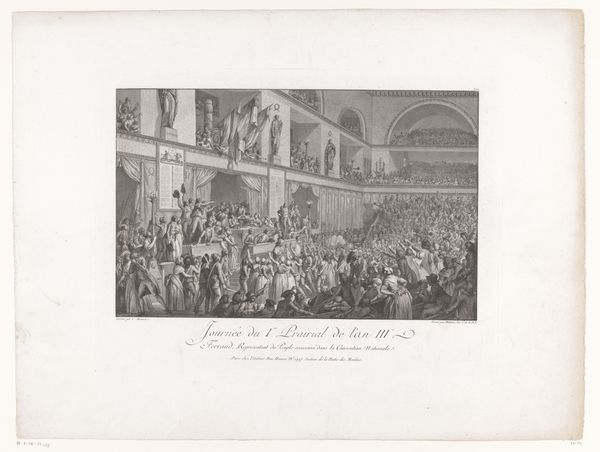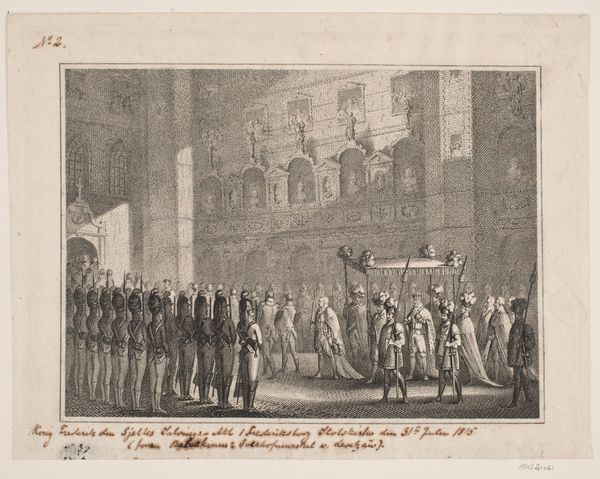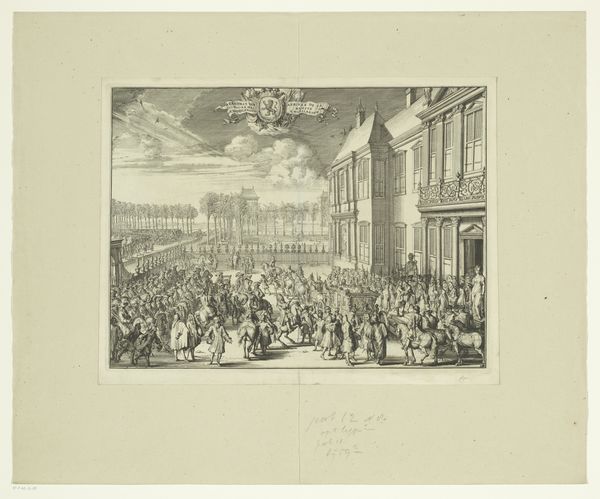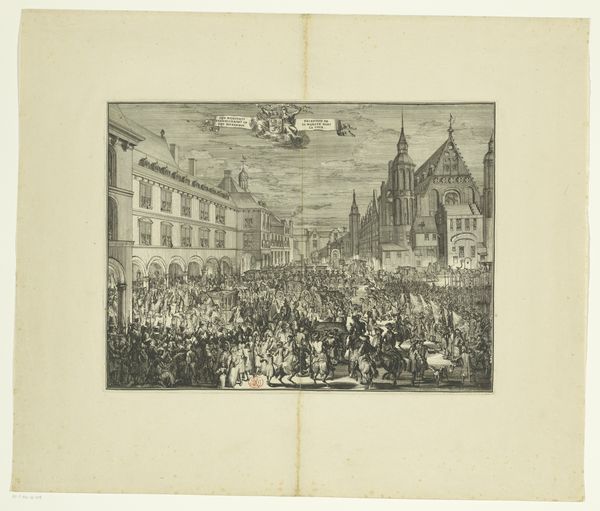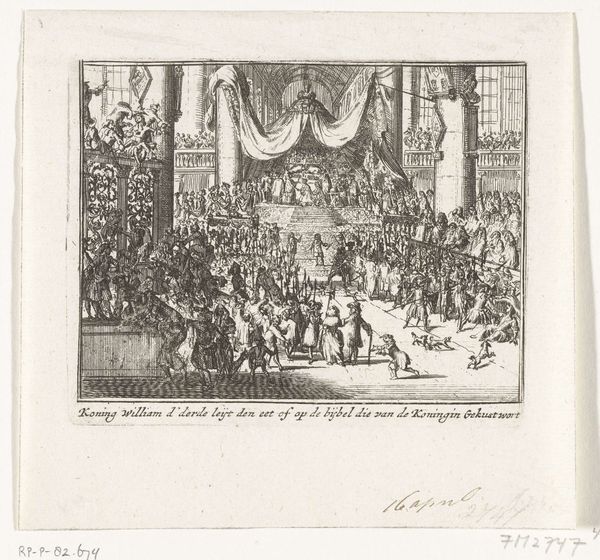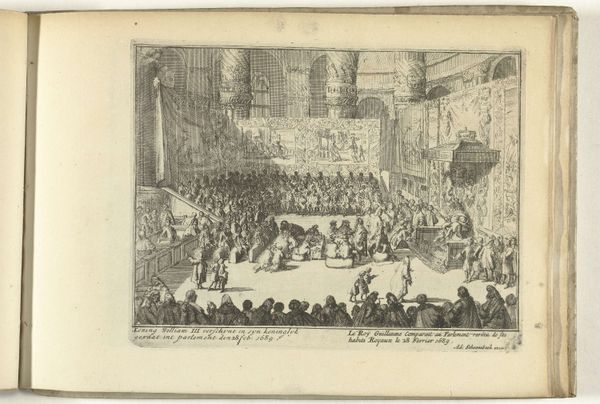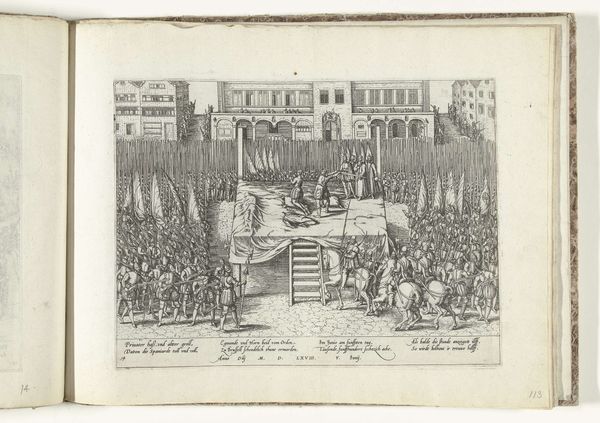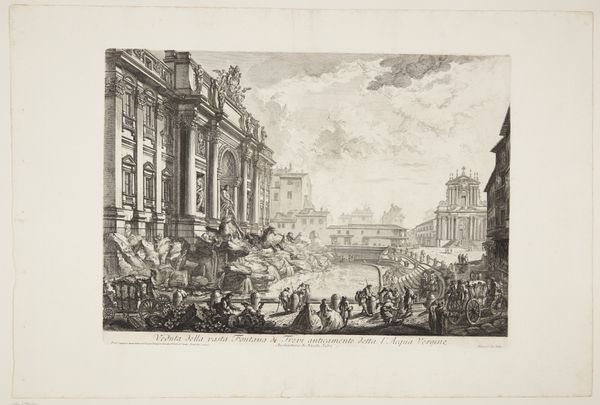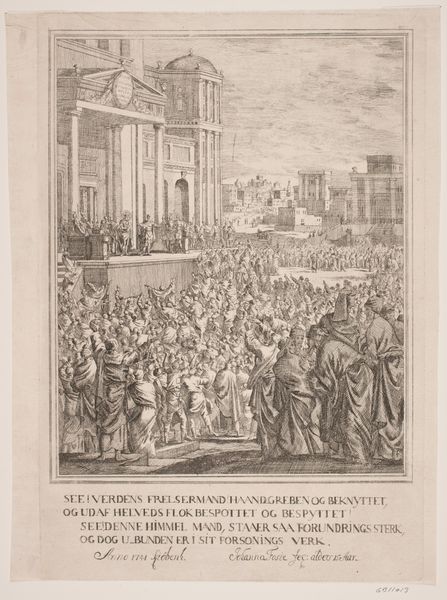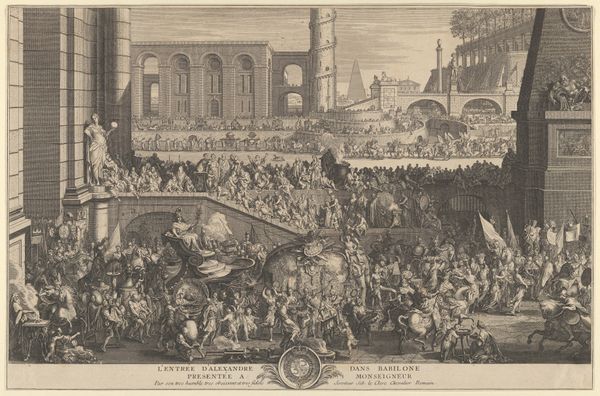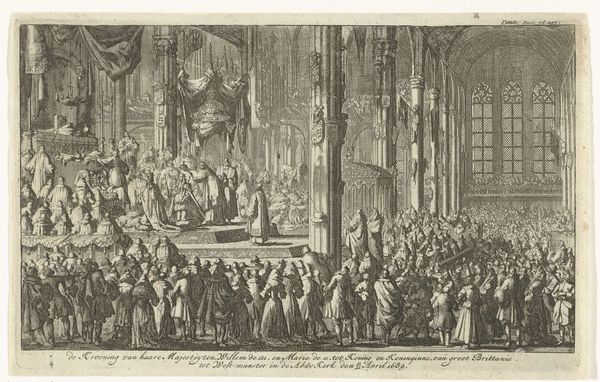
Kong Frederik V i procession til salvingshøjtidelighed i Frederiksborg Slotskirke. Illustration til Frederik d. IV's salvingsakt 1726 - 1757
0:00
0:00
print, etching, engraving
#
baroque
# print
#
etching
#
etching
#
history-painting
#
engraving
Dimensions: 122 mm (height) x 145 mm (width) (plademaal)
Editor: This engraving from somewhere between 1726 and 1757 by Odvardt Helmoldt de Lode shows King Frederik V's procession for his anointment ceremony at Frederiksborg Palace. It's incredibly detailed and… busy! What can you tell me about it? Curator: Well, on the surface, it's a depiction of power, but let’s dig a bit deeper. Think about the context: Europe still reeling from religious wars, the rise of absolute monarchies. These processions weren’t just ceremonies; they were carefully staged displays of dominance, intended to legitimize the ruler’s power through divine right. Editor: So it's like propaganda, almost? How much control would Frederik V have over an image like this? Curator: Exactly. But the artist, while commissioned, also operates within a system. De Lode's detailed rendering, typical of Baroque sensibilities, conveys the opulence of the monarchy, but consider who *isn't* represented here. Where are the dissenting voices, the underprivileged? The focus is entirely on maintaining the illusion of unified support. Do you notice the way the crowd is presented? Editor: It does seem like one mass of people…almost indistinguishable. It makes me think of crowd control. Curator: Precisely. This reinforces a power dynamic where individuality is suppressed for the sake of collective allegiance. Considering this through a lens of critical theory allows us to understand how art, even historical depictions, can be tools for upholding or challenging systems of power. Editor: That's a perspective I hadn't considered. It really puts the artwork in a completely new context. Thanks! Curator: It's crucial to question whose stories are told, whose are erased, and what power dynamics are at play within the art. Now, go forth and challenge everything!
Comments
No comments
Be the first to comment and join the conversation on the ultimate creative platform.
